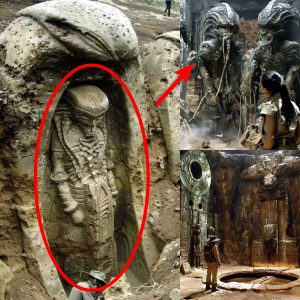The “Tollund Man” is one of the most significant and intriguing archaeological discoveries from the Iron Age. Found in an almost perfect state of preservation, the Tollund Man provides invaluable information about the life and death of a person over 2,000 years ago. This discovery not only opens a window into the past but also sparks numerous debates among scientists about the cause of death and the cultural significance of the Tollund Man.

Where the Tollund Man was found ?
On May 8, 1950 the police in Silkeborg received an alarming message. Viggo and Emil Højgaard, discovered a naturally mummified body while digging for peat in the Bjældskovdal area near Silkeborg, Denmark. The finders believed they had found a murder victim and consequently notified the police. Once the police learned that the body had been discovered 2 1/2 meters into the peat and that there were no signs of recent digging they were almost certain that it was more a case for the people at Museum Silkeborg than the police.

It was quickly determined that this was not a recent murder victim but instead a bog body – a corpse that had been naturally mummified and preserved in peat bogs for thousands of years. This man was known as Tollund Man after the nearby Danish village, and the fact that his body was so well preserved after two millennia is still shocking today.
What did Tollund Man look like when he was found?
The presence of wisdom teeth suggest the Tollund Man was at least 20 years old when he died in Denmark’s Bjældskovdal bog in Jutland, but researchers think he was actually between 30 and 40. Radiocarbon dating indicates he died at some point between 405 and 380 B.C.
Standing at about 5 foot 3 inches, the Tollund Man was discovered in a sleeping position with a rope around his neck. An autopsy revealed he had died of hanging, noting his extremely well preserved head and face.

After his death, the acidity in the peat bog preserved Tollund Man’s bones and many of his soft tissues, including an intact yet shrunken brain and intestines complete with their contents. Tollund Man’s skin and nails had cured and blackened over thousands of years spent in the oxygen-free environment of the bog. But their full decomposition was blocked by the chemicals that are produced when sphagnum moss, the main moss that comprises peat, degrades.
Today, his body is preserved at the Silkeborg Museum, a Danish cultural heritage museum near the place of his discovery.
The preservation of Tollund Man is truly remarkable
The preservation of the Tollund Man is truly remarkable. His body, including facial features and expressions, remained nearly intact due to the unique conditions of the peat bog where he was found. The high acidity and low oxygen levels in the bog created an environment that prevented decomposition and preserved the Tollund Man for over 2,000 years. Analysis revealed that Tollund Man had eaten a meal of barley porridge, flax seeds, wild grass seeds, and fish approximately 12-24 hours before his demise.

Tollund Man’s attire also provides crucial clues about his life. He was dressed in leather trousers, a wool cloak, and a woolen cap, all made from natural materials. Along with his body, archaeologists found a few implements, including an oak wood dagger and a rope.
The age of Tollund Man was determined using radiocarbon dating, indicating that he lived between 400 BCE and 200 BCE. This makes Tollund Man one of the best-preserved ancient mummies in the world, and an invaluable resource for studying Celtic culture and society.
Why was the Tollund Man killed ?
The exact reason why the Tollund Man was killed remains a subject of debate among scientists. The primary hypothesis is that he was either executed or sacrificed. Here are the main theories:

Ritual Sacrifice
Some researchers believe that the Tollund Man may have been a victim of a ritual sacrifice. The careful placement of his body and the presence of a noose around his neck suggest he could have been offered to the gods or spirits in a religious ceremony. This theory is supported by the fact that other bog bodies found in similar conditions are also thought to have been sacrifices.
Execution for a Crime
Another theory is that the Tollund Man was executed as punishment for a crime. During the Iron Age, hanging was a common method of execution for serious offenses. The noose around his neck and his apparent hanging indicate that he might have been put to death for breaking the law.

Forensic Analysis of the Body
In 1978 the National Police Forces conducted finger print scanning on the Tollund man and discovered a couple of interesting features. The Tollund man’s thumb has a similar pattern to those of humans of the present day. The Tollund man’s fingerprint is deemed one of the oldest ever recorded in history.

Forensic examiners have drawn up other conclusions about his last meal before he perished, due to extraction of his alimentary canal for further analysis. It was uncovered that the Tollund man may have consumed a meal 12 to 24 hours before his imminent death. Through further analysis it was found that his meal consisted of grains and seeds and traces of flaxseed, barley false flax and knotgrass. He offered a distaste for fish as evident by the lack of carbon 13 that is usually found in marine animals
The discovery of the Tollund Man was a major breakthrough in the field of archaeology, providing insights into the lives and deaths of Iron Age humans. Despite much controversy surrounding his cause of death and cultural significance, the Tollund Man remains a living testament to nature’s preservative powers and the importance of interdisciplinary research in explaining past code. Further research will continue to reveal more mysteries about the people and the times in which the Tollund People lived.





